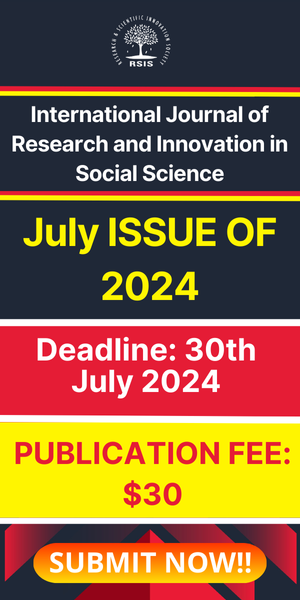Physico-Chemical Properties of Pharmaceutical Effluents Samples in Lagos, Nigeria
- January 4, 2022
- Posted by: RSIS
- Categories: Biochemistry, Chemistry, IJRIAS
International Journal of Research and Innovation in Applied Science (IJRIAS) | Volume VI, Issue XII, December 2021 | ISSN 2454–6194
Physico-Chemical Properties of Pharmaceutical Effluents Samples in Lagos, Nigeria
Olusegun Samuel Tunde1*, Ezeokoli Chidimma Abigail2, Mbakogu Chidinma Happiness2, Asogbon Ikuesan Adebayo3, Fadimu Oladayo Kehinde4, Osundiya Medinat Olubunmi1
1 Department of Chemistry, Lagos State University, Lagos-Nigeria
2Department of Microbiology/Biochemistry, University of Nigeria, Enugu, Nigeria
3Department of Biochemistry, Olabisi Onabanjo University, Ogun-State, Nigeria
4Department of Biochemistry, Federal University of Agriculture, Abeokuta, Nigeria
*Corresponding author
Abstract: In most developing countries, pharmaceutical effluents generated during drugs production are often times discharged into the environment with little or no treatment, which poses potential toxic effects on the ecosystem. This study investigated the physico-chemical properties of pharmaceutical effluents of three pharmaceutical origins in Lagos, Nigeria to ascertaining their levels of compliance with FEPA and WHO as regards effluents discharge. The operational parameters include: Temperature, pH, Dissolved Oxygen (DO), Biochemical Oxygen Demand (BOD), Chemical Oxygen Demand (COD), Total Solids (TS), Chloride (Cl-), Nitrate (NO-3). The mean values of pH of the effluents were 5.57±0.20, 7.34±0.38 and 6.71±0.58 for sites the PC1,PC2 and PC3 respectively. Concentrations of heavy metals, such as Copper, Zinc, Chromium and Iron were also determined using the Atomic Absorption Spectrophotometer (AAS). The mean concentrations (mg/L) of the heavy metals range from 0.06 to 0.61 for copper,0.00 to 0.32 for chromium and 0.68 to 8.90 for Iron. The results obtained for the heavy metal concentrations were observed to fall within WHO/FEPA stipulated limits, while few of the water quality parameters were found to be higher, which indicate their extents of toxicity to man and his environment.
Keywords: Pharmaceutical effluents, physico-chemical, potential toxic, ecosystem.
I. INTRODUCTION
Pharmaceuticals are wide and different types of chemical compounds made to prevent, cure, treat and improve health [1,2]. Lots of fortunes were brought about by pharmaceuticals; yet, their adverse effects on our environment cannot be overemphasized, as a result of their structural stability and non biodegradability [3]. During pharmaceutical processes, a large amount of poisonous drugs is produced, which most times mix with plenty water, resulting in waste water, of which are highly poisonous to man and his environment [4]. Pharmaceutical industries produce a large amount of drugs, including anti-biotics, which consist of organic starting materials, solvents and other additives (inorganic). As a result of this, large quantities of effluents are produced, with very high contents of organics and solids, with the presence of active pharmaceutical ingredients [5].


